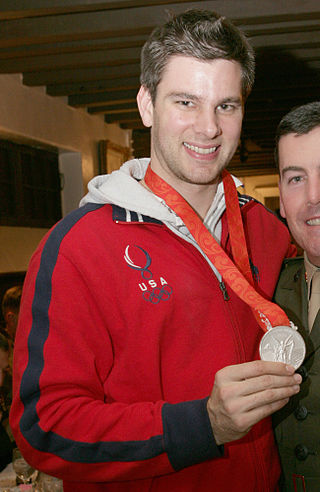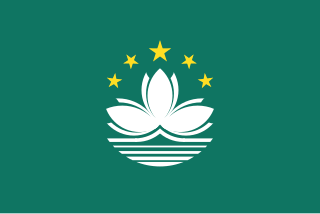
Fencing is a combat sport that features sword fighting. The three disciplines of modern fencing are the foil, the épée, and the sabre ; each discipline uses a different kind of blade, which shares the same name, and employs its own rules. Most competitive fencers specialize in one discipline. The modern sport gained prominence near the end of the 19th century and is based on the traditional skill set of swordsmanship. The Italian school altered the historical European martial art of classical fencing, and the French school later refined that system. Scoring points in a fencing competition is done by making contact with an opponent.
Classical fencing is the style of fencing as it existed during the 19th and early 20th centuries. According to the 19th-century fencing master Louis Rondelle,
A classical fencer is supposed to be one who observes a fine position, whose attacks are fully developed, whose hits are marvelously accurate, his parries firm, and his ripostes executed with precision. One must not forget that this regularity is not possible unless the adversary is a party to it. It is a conventional bout, which consists of parries, attacks, and returns, all rhyming together.
Janice-Lee York Romary was a U.S. women's Olympic foilist who was the first woman to appear at six Olympic Games.
British Fencing (BF), formerly the British Fencing Association is the national governing body (NGB) for the Olympic sport of fencing in the British Isles.

Edoardo Mangiarotti was an Italian fencer. He won a total of 39 Olympic titles and World championships, more than any other fencer in the history of the sport. His Olympic medals include one individual gold, five team golds, five silver, and two bronze medals from 1936 to 1960.

Aida Mohamed is a Hungarian foil fencer, silver medallist at the 1993 World Championships and team gold medallist at the 2007 European Championships. She is the only Hungarian athlete in history to have competed at seven different Olympic Games.

Allan Louis Neville Jay MBE was a British five-time-Olympian foil and épée fencer, and world champion.
Harold David Goldsmith, known as Hal was an American Olympic foil and epee fencer.
Byron Lester Krieger was an American foil, sabre and épée fencer. Krieger represented the United States in the Olympics in 1952 in Helsinki and 1956 in Melbourne, and in the 1951 Pan American Games where he won two gold medals.

Timothy Frank Morehouse is an American fencer who won a Silver Medal competing in the men's sabre as a member of the United States fencing team at the 2008 Summer Olympics in Beijing. Morehouse is coached by Yury Gelman. He is the founder of the Fencing in the Schools program.
Blade Club (Fencing) Singapore is a commercial fencing club founded 2005 by Henry Koh, an ex-National fencer of Singapore. The club teaches fencing students at all levels, from beginner to advanced fencing in group or individual lesson formats. According to the Club website, the mission of the Blade Club is to help develop fencing in Singapore, focusing on helping students to learn fencing well and to achieve success in competitive fencing. Blade Club has classes for all three weapons in fencing: foil, epee, and sabre. The Club is located along Bukit Timah Road, Singapore.
Henry William Furse "Bill" Hoskyns MBE was a British fencer who appeared at six Olympic Games.,
Ronald René Charles Paul was a British fencer.
John Erle Fethers was an Australian fencer. He competed in six events at the 1952 Summer Olympics. He was a longstanding member and coach at the Melbourne-based VRI Fencing Club. On 10 October 2009 in recognition of a significant international fencing career, outstanding personal contribution to Australian fencing, and lasting legacy in the training and development of numerous coaches and Olympic athletes, he was inducted as a Living Legend to the VRI Hall of Fame.
Ivan Bernard Lund was an Australian fencer. He competed at four Olympic Games. He was a longstanding member of the Melbourne-based VRI Fencing Club.
Peter Jacobs is a British épée fencer who competed at the Olympics.
Peter Bakonyi was a Hungarian-born Canadian Olympic foil and épée fencer. He competed at the 1968 Summer Olympics in Mexico City. He was also a six-time Canadian national fencing champion, 18-time British Columbia fencing champion, three-time medalist at the Commonwealth Games, four-time silver medalist at the Maccabiah Games in Israel.

Macau sent a delegation to participate in the 2012 Summer Paralympics in London, United Kingdom, from 29 August to 9 September 2012. This was the seventh appearance at a Summer Paralympic Games for the territory since its debut at the 1988 Summer Paralympics. A high jumper and a wheelchair fencer were chosen to represent Macau in London after the nation qualified one athlete by merit and the other by invitation. Wheelchair fencer In I Lao was nominated to be the territory's flag bearer for the opening ceremony. At the Paralympics, Lao came ninth in the group rounds of both the women's individual foil A and the women's individual épée A tournaments while high jumper Hio Sam Tong also finished in ninth in the men's long jump F20 event.
Richard Dale Peterson was a New Zealand fencer and lawyer. He represented his country at the 1966 and 1970 British Commonwealth Games, and won 12 New Zealand national fencing titles across three disciplines. A commercial lawyer in Wellington, Peterson and his wife Hilary established clubs to support sufferers of dementia.






